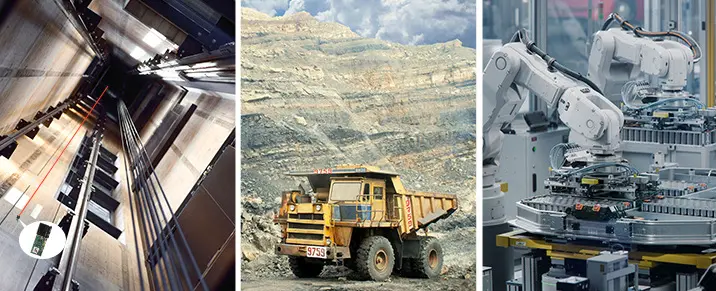Efficient warehouse positioningmanagement is the backbone of modern supply chains. As logistics demand grows, the need for precision, speed, and automation becomes more critical. Laser sensors have emerged as essential tools in warehouse automation, offering real-time, high-accuracy positioning to streamline operations. From inventory control to the navigation of autonomous vehicles, laser positioning systems are revolutionizing how warehouses function.
Applications of Laser Sensors in Warehouse Positioning
1. Inventory Management: Real-Time Tracking of Goods
Laser sensors enable precise monitoring of inventory positions in real-time. They can measure distances and detect object presence on shelves or conveyor belts, allowing warehouse management systems (WMS) to maintain accurate stock levels and locations. This reduces manual errors and supports just-in-time logistics.
- Benefit: Reduced human error in stock counts and faster inventory audits.
- Example: Fixed laser sensors on racking systems can verify pallet presence or absence instantly.
2. Automated Guided Vehicles (AGVs): Navigation and Obstacle Avoidance
AGVs rely on laser sensors for navigation and dynamic path planning. By continuously scanning the environment, laser sensors help AGVs avoid obstacles, detect humans or other moving equipment, and position themselves with sub-centimeter precision.
- Benefit: Seamless integration of AGVs into mixed-traffic environments.
- Example: A laser-based SLAM (Simultaneous Localization and Mapping) system guides AGVs through complex warehouse layouts.
3. Stacker Cranes: Precise Positioning for Loading and Unloading
In high-density storage warehouses, stacker cranes operate in narrow aisles and require millimeter-level accuracy to place or retrieve goods. Laser distance sensors ensure reliable vertical and horizontal positioning, improving efficiency in fully automated storage and retrieval systems (AS/RS).
- Benefit: Fast and precise placement, even in dim or dusty environments.
- Example: High-speed laser sensors guide the crane to the exact shelf location, reducing retrieval time.
Benefits of Laser Positioning Systems
- Enhanced Accuracy: Laser sensors offer precise, repeatable measurements unaffected by lighting or ambient conditions.
- Reduced Labor Costs: Automation minimizes the need for manual intervention, reducing labor-related expenses.
- Improved Safety: Laser scanners can detect obstacles and people, enabling safe operation of automated systems.
- Scalability: Systems can be adapted for different warehouse sizes and automation levels.
Recommended Product: Meskernel’s High Frequency Ranging Sensor Module provides high-speed, high-accuracy laser distance measurement ideal for warehouse positioning and AGV navigation.
Case Study: Improving Warehouse Efficiency with Laser Sensors
Company Profile: A large e-commerce distribution center faced challenges with inventory misplacement and slow AGV navigation in a 10,000-square-meter facility.
Solution: By integrating a network of laser warehouse positioning systems—both on static racks and mobile AGVs—they achieved:
- 30% faster order picking times
- 25% reduction in misplaced inventory
- Real-time visual tracking of every pallet and vehicle
Result: The investment in laser sensors paid for itself within 8 months, while significantly enhancing overall operational efficiency.

Conclusion
The adoption of laser sensors in warehouse positioning is a game-changer for organizations looking to improve automation, accuracy, and safety. Technologies like laser positioning systems allow for precise control of warehouse assets and seamless integration with automated logistics systems.
Explore how Meskernel’s High Frequency Ranging Sensor Module can elevate your warehouse operations with reliable, high-frequency laser measurement capabilities.